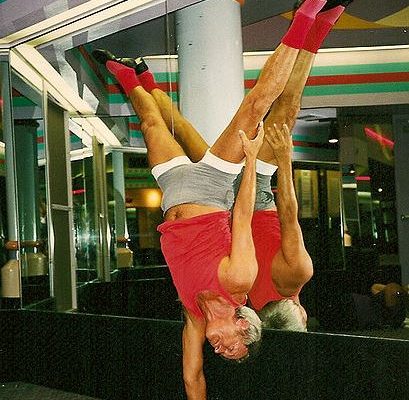
The draft Redlands Economic Development Strategy puts great faith in a “growth scenario”. It makes a case for population growth to sustain sectors of the economy like retail and construction. But maybe there is an “old” solution to improving our City’s economy – the ageing population of baby boomers. These are people with lifestyle aspirations for their later years and the means to achieve them.
The draft Economic Development Strategy links economic growth objectives directly to population growth, stating that:
…in order to meet average annual GRP (Gross regional product) of 3% to 2041 the city will need to substantial lift export oriented and value add industries, and/or aim for a higher population growth.
Increasing our City’s population is not a panacea. Ratepayers have to meet significant costs to service new residential development estimated at $25 000 per lot for “greenfield” development. These City costs are funded with a combination of debt and rates. An often raised furphy is that more residents will lead to lower average Council rates per property. This has not occurred historically in the Redlands and examples elsewhere seem non-existent. At present, the ratepayers of Redland City are struggling with a significant operational deficit and the prospect of future rate increases to fund an infrastructure maintenance backlog.
Most Australians, especially those living in Queensland, seem to agree that we do not need more people, as shown in this opinion poll. The community understands that rapid population growth causes reduced quality of life for existing residents and harm to our natural environment.
What could baby boomers do for Redland City?
Instead of being preoccupied with population growth, we should look more closely at another demographic trend – the impact that a large number of aging baby boomers will have on our city’s economic development.
In a report by Bernard Salt, the Monash Baby Boomer Study, he makes the general point that:
Boomers want an active and meaningful retirement. They are re-engineering the 55-65 time in life so that there is a balance between work and lifestyle. This is a generation that will ease into retirement prompting the over-55s to remain engaged in some form of part-time work.
The Regional Australia Institute recently released a report titled Talking Point: An ageing (regional) Australia and the rise of the Super Boomer which examines the impacts of ageing baby boomers on local economies in areas similar to the Redlands. It finds that:
Baby Boomers are also the wealthiest generation to reach retirement with their share of total wealth increasing over the past two decades. The average household wealth of a Baby Boomer is one of the highest in the country. With no kids at home and fewer financial commitments, their spending power is significant.
The report makes interesting conclusions such as:
…the different characteristics and contributions of Baby Boomers will significantly influence the future of regions and change their development opportunities, as well as building a unique quality of life and experience for Baby Boomers themselves. To us, this makes people born between 1945 and 1961 living in regional Australia our ‘Super Boomers’!
Many retiring baby boomers will seek to stay active through organised volunteering. This offers the community a low cost workforce as well as opportunities for individuals to develop new skills. There are good examples of “volunteerism” across Redland City but plenty of scope for a more organised approach that could unlock the potential of our super boomers.
A dose of Salt for economic development

Further advice from Bernard Salt, reported in “Shifting Shape of Jobs” suggests that the aging population will create opportunities for younger people. He says:
Start planning for a job in hospitality or a nursing home, if you want to shore up your future options. Other careers to consider include health and aged care, education and work in cafes and restaurants.
An interesting idea, that might apply to Redlands, is a need for a good design guide for ageing, and how the current housing stock could be modified to meet the needs of Boomers for smaller gardens, easier access and community support to facilitate ageing-in-place. Building and planning mechanisms may need to be revised, but the outcomes could pay long term social and economic dividends.
Clearly, the Boomers’ views on retirement are not the same as the generation before them. An enlightened and forward thinking Council would be getting on the front foot to respond to this obvious demographic trend in a revised Economic Development Strategy.
Baby boomers might well be an “old” solution to the question of how to improve the Redlands economy.
Please note: Offensive or off-topic comments will be deleted. If offended by any published comment please email thereporter@redlands2030.net
